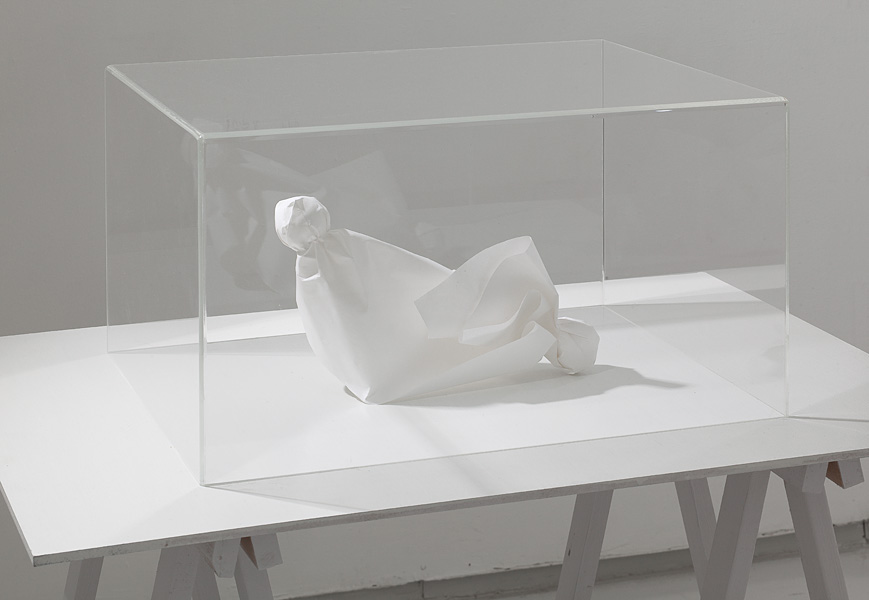Misunderstood
Group Exhibition / Misunderstood
Opening: 22/03/2012 Closing: 03/05/2012
Misunderstood
Curated by: Reply All – Yasmine Datnow and Maïa Morgensztern
Artists: Rina Banerjee, Talia Keinan, Wolfe von Lenkiewicz and Hennessy Youngman
The continuous growth of the technology of information and communication has changed people’s knowledge and understanding of each other; what were once commonly held stereotypes have been fractured by globalised experiences. A proliferation of information creates a reordering of beliefs and
this shift lead to misrepresentation and misunderstandings.
Misrepresentations of normality lead to the Uncanny and the displaced references that occur also blur any sense of self. This brings the potential for a new world order. As a shift takes place, identity issues arise. Communication between individuals becomes skewed, which emerge as duplicitous and enable artists to play with their audience through whimsical interactions. All these events encourage self proclaimed taste-makers to constantly challenge notions of taste.
As a result people learned behaviors are contest by illusory correlation, (the perception of a relationship between two variables when only a minor or absolutely no relationship actually exists). The various ways in which misinterpretation is visually manifested and where a sense of order can be rebuilt beyond this issue are explored through the work of Rina Banerjee, Talia Keinan, Wolfe von Lenkiewicz and Hennessy Youngman calling into question Taste and its connotations. The audience’s dialogue with the work evokes a reassignment of value by an ever-changing, self-elected class able to diffuse and shuffle information at speed.
Brooklyn based artist Rina Banerjee (Born 1963, Kolkota) moved with her family to the UK and then to America. In 1995 she completed an MFA at the Yale University School of Art after abandoning her career as a polymer chemist. She has a love of materials and enjoys theatrically re-staging their inherent meanings in sculptures and drawings, paintings and videos.
Like an alchemist Banerjee draws on her experiences growing up in different places, bringing items that act as cultural signifiers together in curious and enchanting compositions. The works have a magical feel and tell stories; their titles give a mythical introduction to the artist’s thought process. Her watercolor works explore a dream-like world where strange beastly but oddly endearing creatures are suspended in time, surrounded by hybrid flora and fauna. Sometimes a more sinister undercurrent pervades, giving us
a feeling that beneath the glimmer and shine, darker secrets lurk.
The work of Talia Keinan (Born 1978, Israel) is in constant flux. Her use of a variety of media refers to the existing realm that lies between reality and fantasy. The space she creates can be viewed as a world of its own, where sound unveils an obscure memory, and projected video on a drawing generates imaginative places. By navigating the space, the viewer initiates a dialogue between objects to create a private and associative experience. The materials are transformed as a personal narrative unfolds, creating an invented and autonomous world. Within her drawings and collages this alternative world remains for us to explore.
Wolfe von Lenkiewicz’s (Born 1966, Britain) chief artistic concern is the appropriation of language and mythology. He boldly experiments with hybrid visual combinations that straddle the murky borders of the shocking and offensive. His art historical intervention demonstrates our complacency towards imagery, namely those iconic works through art history. Our knowledge of them has become so much second nature that we take them for granted. It is not until they are disturbed that we realize how much confidence we place in them. The history of art can be understood as comprising of changes from one mode of visual representation to another. The difference is the highly contemporary and extreme nature of Lenkiewicz’s subject matter. The works demonstrates that no image is sacred and thus the artist is free to disseminate subject matter as he sees fit.
Hennessy Youngman (Born 1985, the Bronx) is a self taught art historian, who tutored himself about art and the inner-workings of the art world whilst working as a security guard at the Metropolitan Museum of Art, New York.
Youngman appears in direct-address to the Internet at large in online episodes of a series titled “Art Thoughtz” which began in early 2010. Most often, Youngman takes on the role of art or cultural critic while speaking about topics concerning art, race, gender, and popular culture. In his video monologues, Youngman becomes a tutor to an audience of hopeful artists in search of success. By explaining traditional art concepts and relating them to pop culture and real world examples, he is able to expose issues and conflicts within contemporary art society. A scheme is perpetuated, through Youngman and the “Art Thoughtz” videos, of following an often sympathetic character, one who is apparently outside the art world, attempting to understand and permeate a seemingly exclusive cultural society.
Curators:
At the beginning of 2012 Yasmine Datnow and Maïa Morgensztern started the company Reply All, having collaborated on projects for the previous 2 years.
Reply All is an agency specializing in curating, teaching, broadcasting and consulting for contemporary art, design and culture. Previous projects include the critically acclaimed group exhibition JaffaCakes TLV, a show in London featuring 7 artists from Tel Aviv. Ongoing projects include the radio show ‘Culture FRL’ for the radio station FRL (French Radio London).
Prior to their collaboration, Yasmine Datnow received a BA in the History of Art and Architecture at the University of East Anglia and an MA in Contemporary Art at Sotheby’s Institute. She became Modern Collections Coordinator at White Cube (2000-2004) and was an Independent Art Consultant and Curator (2004-2012).
Maïa Morgensztern received a BA, MA and M.Phil in Art History from La Sorbonne, Paris IV. She later became Art and Auction Manager at Robert Wilson’s Watermill Foundation, New York (2005-2008), Manager of the Ikepod by Marc Newson pop-up store at Phillips de Pury, London (2009) and Cultural Editor for French Radio London (2010-current)
















































